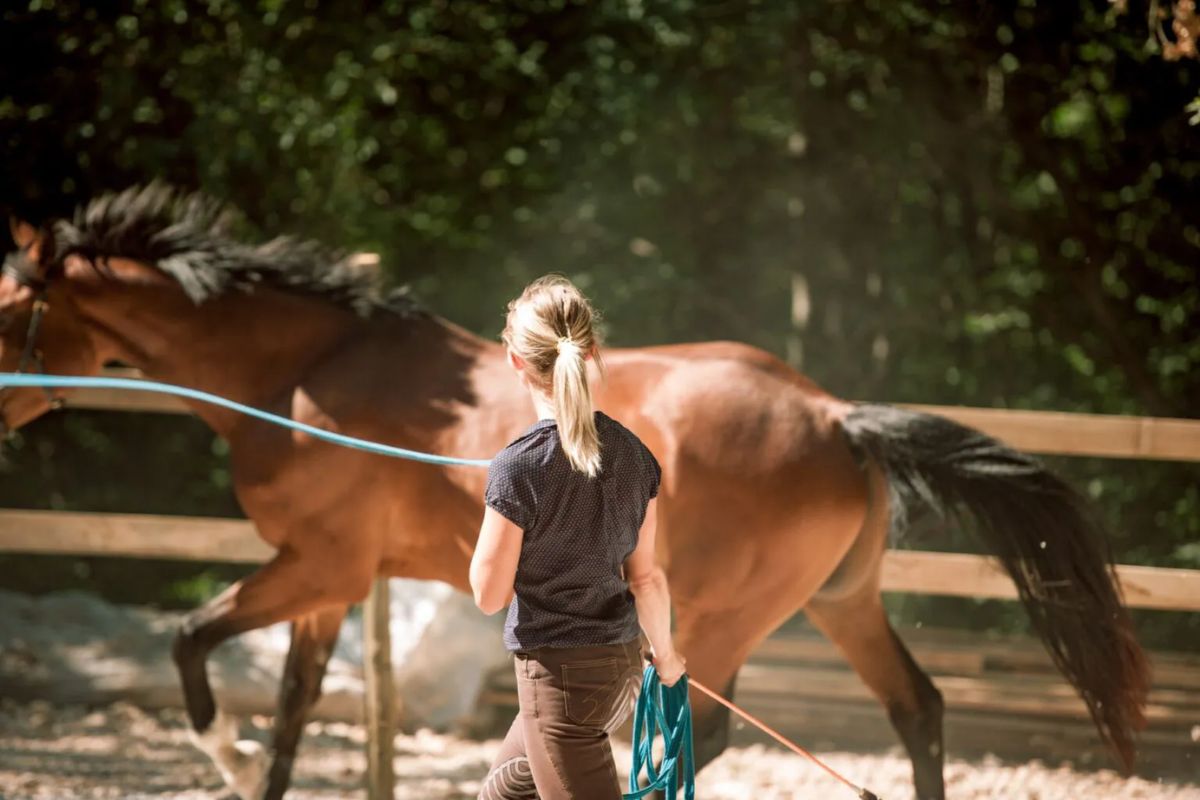Menu

When longeing, it's crucial that the horse moves correctly. But how should it move? And how do you get it to do so? The key is the topline. The goal should be to get the horse to move in a way that it lowers its head and neck, raises its back, and uses its muscles all along the spine - just as the goal is when riding. This article aims to help you learn to keep an eye on the horse's topline.
PART 3 OF 3
This is the third part of the article series on longeing. It consists of three interconnected parts. The first part is titled "Build up the horse rather than breaking it down." The second part is called "Communicate with voice and body." The articles reflect the experiences of the Malgré Tout editorial team.
There are particularly six movement patterns in the horse to watch for:
• Does it step in its own track? Meaning, does the hind hoof step right into the track of the forehoof - or perhaps even beyond? If not, the horse can raise its back even more, so the hind legs step better underneath it.
• Do the hind hooves step further forward than the hocks? Once the horse is warmed up, the hind hooves should step further under the horse and thus in front of the hocks.
• Does it lift its hips? On each circle, you should see the horse lift its hip up and down in time with its stride. It can only do this if it also uses its back.
• Does the horse seem to use its abdominal muscles? These are used to lift its back. This can be seen by the belly "rippling" a bit as the horse walks.
• Does the underside of the horse's neck look relaxed? To use its topline, the horse needs to relax its under-neck.
• Are its ears relaxed? When the horse turns its ears to the side and they flick slightly, it's because it's relaxed - likely because it's moving correctly.
When you think your horse is moving as described here, there's a very high chance you're lunging it correctly. In this way, lunging will strengthen your horse and can serve as a valuable addition to other training.
Also read: The Comprehensive Guide to Studs – When to Use Which?
In short, this article series has taught you that to lunge your horse correctly, you should:
• Think of the horse: don't expect more from it than it's capable of and never force it into a particular posture.
• Learn to communicate from the ground: use your voice and body to tell the horse what to do.
• Always monitor the horse's topline: only when the topline is activated does the horse move correctly, and only then will longeing strengthen rather than wear it out.
Also read: 5 Training Tips for Riding the Older Horse